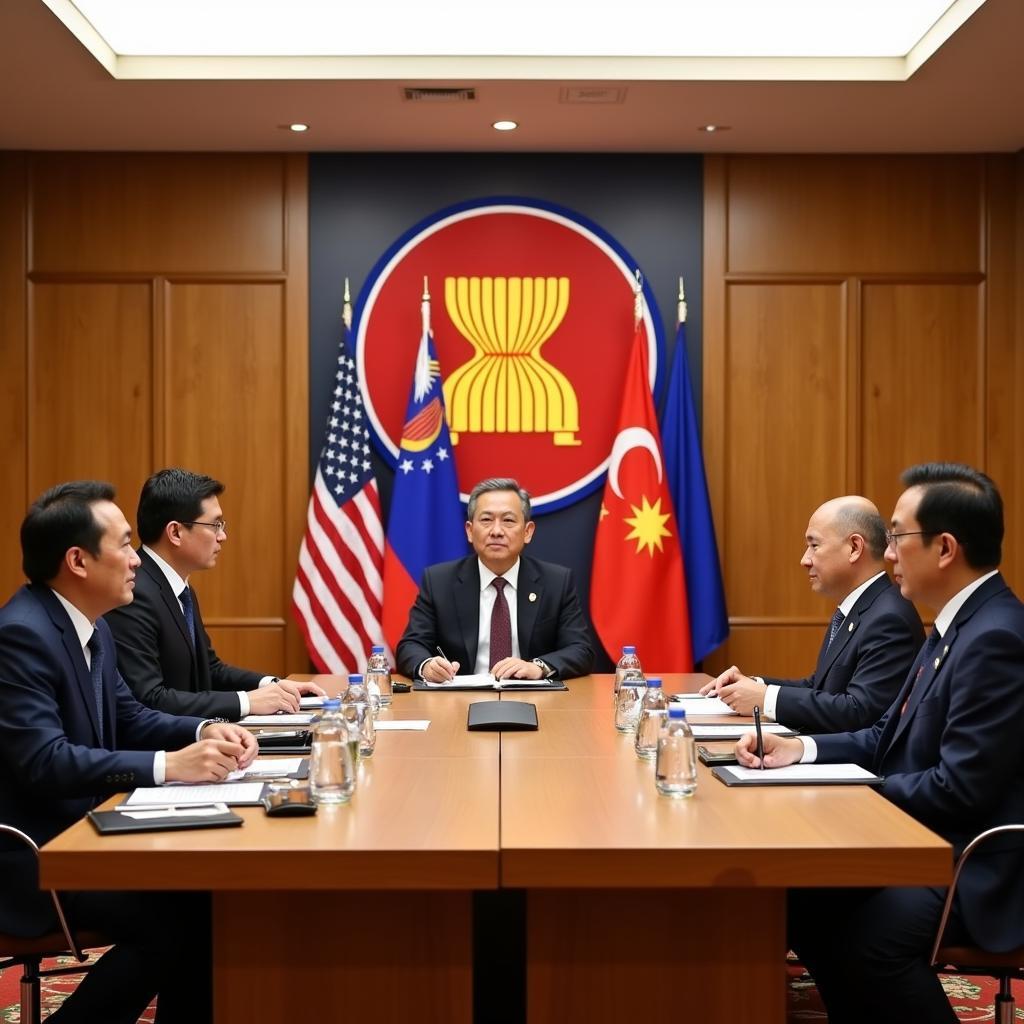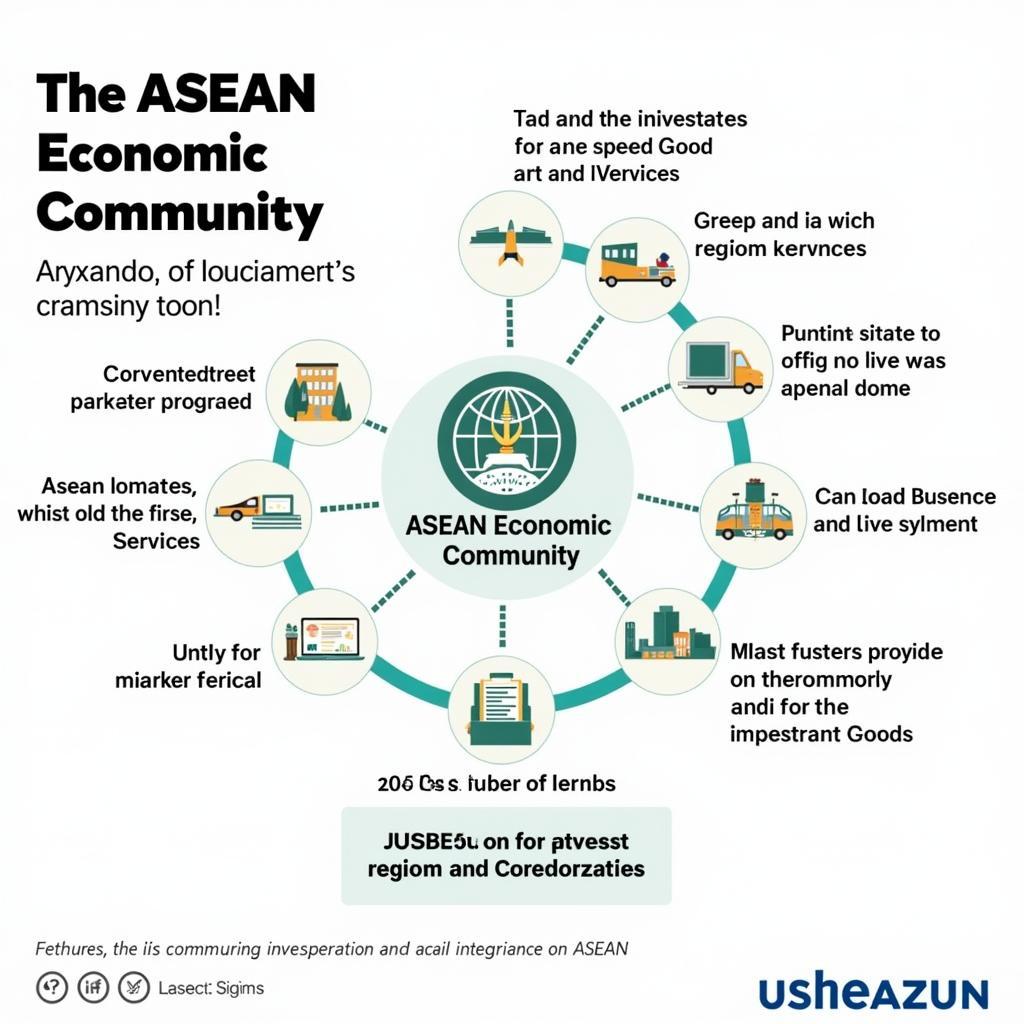The ASEAN 6 members, a core group within the Association of Southeast Asian Nations, have played a crucial role in shaping the region’s economic and political landscape. This article delves into the significance of these foundational nations, exploring their history, contributions, and the impact they have on the broader ASEAN community.
The Significance of the ASEAN 6 Members
The ASEAN 6 members comprise Brunei, Indonesia, Malaysia, the Philippines, Singapore, and Thailand. These nations were the founding members of ASEAN in 1967, laying the groundwork for what would become a dynamic and influential regional bloc. Their combined economic strength, strategic location, and diverse cultural heritage have propelled ASEAN’s growth and fostered cooperation across Southeast Asia.
Economic Powerhouses Driving Regional Growth
The ASEAN 6 members represent a substantial portion of ASEAN’s economic output. From Singapore’s financial prowess to Indonesia’s vast natural resources, these nations have established themselves as key players in global trade and investment. Their collective economic power has driven regional integration and facilitated the development of key infrastructure projects, fostering connectivity and promoting cross-border trade.
A Catalyst for Political Stability and Cooperation
Beyond economics, the ASEAN 6 members have been instrumental in promoting political stability and dialogue within the region. By establishing platforms for communication and negotiation, they have helped to manage conflicts and build trust among member states. This collaborative approach has contributed to a more peaceful and secure Southeast Asia, allowing for greater focus on economic development and social progress.
 ASEAN 6 Leaders Meeting
ASEAN 6 Leaders Meeting
The Historical Context of the ASEAN 6
Understanding the historical context of the ASEAN 6 is crucial to appreciating their present-day significance. Formed during a period of Cold War tensions and regional instability, ASEAN provided a framework for these nations to navigate the complex geopolitical landscape. Their shared commitment to peace, neutrality, and regional cooperation laid the foundation for ASEAN’s enduring success.
From Confrontation to Collaboration: The Evolution of ASEAN 6
The journey of the ASEAN 6 has been marked by a transition from initial apprehension and rivalry to a spirit of collaboration and mutual support. By overcoming historical differences and embracing a shared vision for the future, these nations have demonstrated the transformative power of regional cooperation.
The Impact of the ASEAN 6 on the Broader ASEAN Community
The ASEAN 6 have served as a model for other Southeast Asian nations, inspiring them to join the regional bloc and embrace its principles of cooperation and integration. Their experience and leadership have been invaluable in guiding the expansion of ASEAN and shaping its agenda.
 ASEAN Economic Community
ASEAN Economic Community
A Foundation for Future Growth
The ASEAN 6 continue to play a vital role in shaping the future of ASEAN. As the region faces new challenges and opportunities, their leadership and collaborative spirit will be crucial in navigating the complexities of the 21st century. Their commitment to regional integration and sustainable development will pave the way for a more prosperous and interconnected Southeast Asia.
Conclusion
The ASEAN 6 members represent the cornerstone of the ASEAN community. Their historical significance, economic strength, and commitment to regional cooperation have been instrumental in shaping the region’s trajectory. As ASEAN continues to evolve, the ASEAN 6 will undoubtedly remain at the forefront, driving growth, fostering stability, and promoting a shared vision for a vibrant and prosperous Southeast Asia.
FAQ
- Who are the ASEAN 6 members? Brunei, Indonesia, Malaysia, the Philippines, Singapore, and Thailand.
- When was ASEAN founded? 1967.
- Why are the ASEAN 6 important? They are the founding members and have driven much of ASEAN’s economic and political development.
- What is the impact of the ASEAN 6 on the broader ASEAN community? They serve as a model and provide leadership for other member states.
- What is the future of the ASEAN 6? They will continue to play a key role in shaping ASEAN’s future.
- What are the main economic activities of the ASEAN 6 members? These vary but include manufacturing, tourism, finance, and natural resource extraction.
- How has ASEAN 6 promoted regional stability? Through platforms for dialogue and negotiation, fostering trust and managing conflicts.
Need support? Contact us 24/7: Phone: 0369020373, Email: [email protected] or visit us at: Thon Ngoc Lien, Hiep Hoa, Bac Giang, Vietnam.

